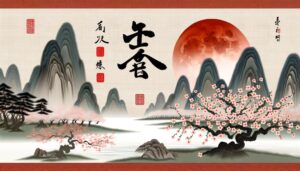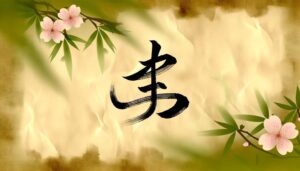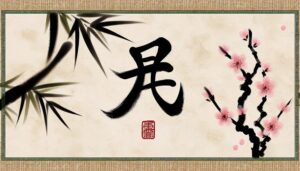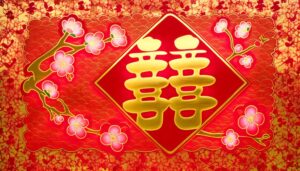What Is the Chinese Symbol for Truth and Meaning?
The Chinese character for truth, 真 (zhēn), is steeped in historical, cultural, and philosophical depth. Evolving from inscriptions on oracle bones during the Shang dynasty, it symbolizes authenticity and moral integrity.
The character's structure combines elements representing completeness and uprightness, mirroring its associations with universal principles. In Confucianism, Taoism, and Buddhism, 真 denotes moral rectitude, alignment with the Dao, and enlightenment, respectively.
This multifaceted character, seen in literature, proverbs, and calligraphy, underscores profound ethical and philosophical ideals within Chinese culture. To uncover the layers behind 真 and its impact on Chinese thought, exploration continues.
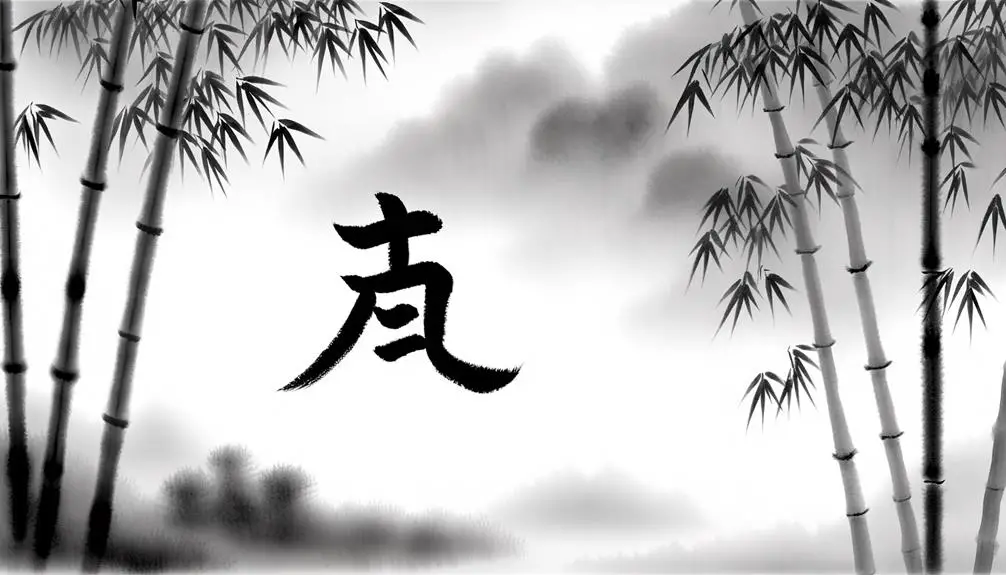
Key Takeaways
- The Chinese character for truth is 真 (zhēn).
- 真 combines elements symbolizing uprightness and completeness.
- It has historical roots in the Shang dynasty and evolved through Zhou and Han dynasties.
- Philosophically, it embodies Confucian moral rectitude, Taoist simplicity, and Buddhist enlightenment.
- In literature and proverbs, 真 signifies authenticity, sincerity, and ultimate reality.
Historical Origins of 真
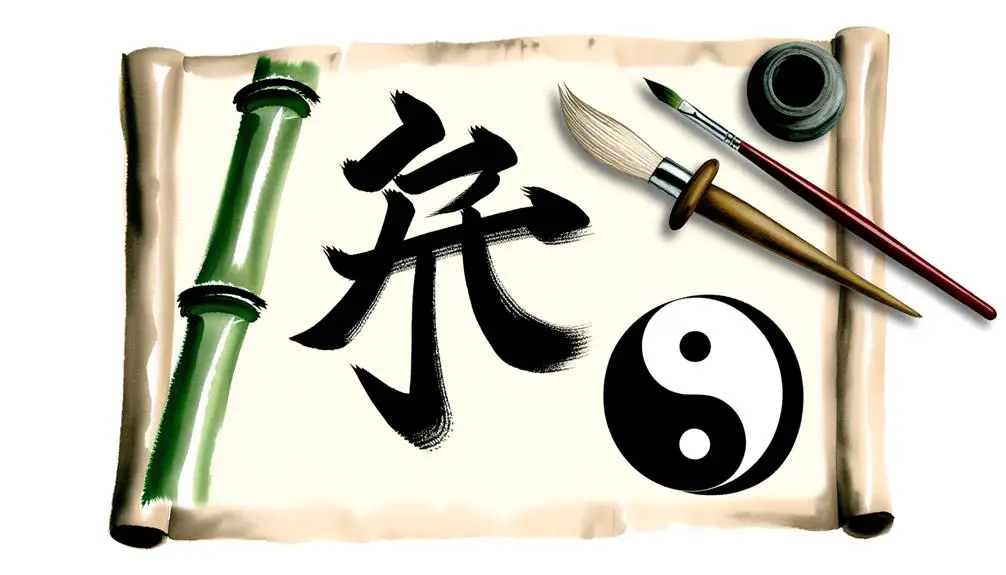
The character 真 (zhēn), symbolizing 'truth' in Chinese, traces its historical origins back to the Shang dynasty, where its earliest forms were inscribed on oracle bones used for divination practices.
These early inscriptions reflect the societal emphasis on uncovering hidden truths and seeking guidance from the divine. The character evolved through the Zhou and Han dynasties, embodying not just a mere factual representation, but a deep philosophical quest for authenticity and moral integrity.
Understanding 真 in its historical context reveals the ancient Chinese values of sincerity and righteousness. This rich cultural heritage underscores the significance of truth in governance, personal conduct, and spirituality, illustrating how the concept has been integral to Chinese thought across millennia.
Etymology and Structure
The character 真 (zhēn), representing truth in Chinese, has an etymology that reflects its deep historical roots and cultural significance.
It is composed of semantic components that symbolize a harmonious synthesis of perception and reality, illustrating the ancient Chinese philosophy of aligning with universal principles.
Over centuries, the structure of 真 has evolved, yet its fundamental meaning has remained intact, underscoring its enduring importance in Chinese linguistics and thought.
Historical Origins Explored
Emerging from the ancient script of oracle bones, the Chinese character for truth, 真 (zhēn), encapsulates a profound historical and cultural evolution.
The character's earliest forms were etched into turtle shells and animal bones during the Shang Dynasty, symbolizing divination and the quest for veracity. Over millennia, its structure evolved, influenced by various script reforms and linguistic shifts, evolving from seal script to the more simplified form used today.
Each transformation reflects broader changes in Chinese society and governance. The character 真 integrates elements representing 'ten' (十) and 'eye' (目), signifying a holistic view or complete understanding, underlining how truth was perceived and valued in ancient Chinese civilization.
This historical journey underscores its enduring significance.
Semantic Components Analysis
Understanding the semantic components of the Chinese character 真 (zhēn) reveals a complex interplay of pictographic and ideographic elements that convey its deeper meaning of truth.
The character is composed of two primary components: 直 (zhí) and 十 (shí). The upper part, 直, signifies 'straight' or 'upright,' denoting a sense of correctness and alignment. The lower part, 十, symbolizes 'ten,' often interpreted in various cultural contexts as completeness or perfection.
Together, these elements suggest a notion of something being perfectly aligned or correctly positioned, embodying the concept of truth. This etymological structure not only encapsulates the literal meaning but also reflects the cultural emphasis on moral and ethical uprightness in Chinese philosophy.
Evolution Over Centuries
Throughout the centuries, the Chinese character 真 (zhēn) has undergone significant transformations in both form and conceptual depth, reflecting shifts in linguistic, cultural, and philosophical paradigms.
Originating from ancient oracle bone script, 真 was initially depicted with a more pictographic structure. As calligraphy evolved through seal script, clerical script, and standard script, the character's form became increasingly abstract and standardized.
These changes also mirrored deeper cultural and philosophical shifts:
- Oracle Bone Script: Truth as divine revelation and cosmic order.
- Seal Script: Aesthetic perfection and bureaucratic order.
- Clerical and Standard Scripts: Intellectual refinement and scholarly interpretation.
This evolution not only signifies the adaptability of the Chinese writing system but also embodies the dynamic interplay between language and cultural ideology, making 真 a profound symbol of truth.
Philosophical Foundations
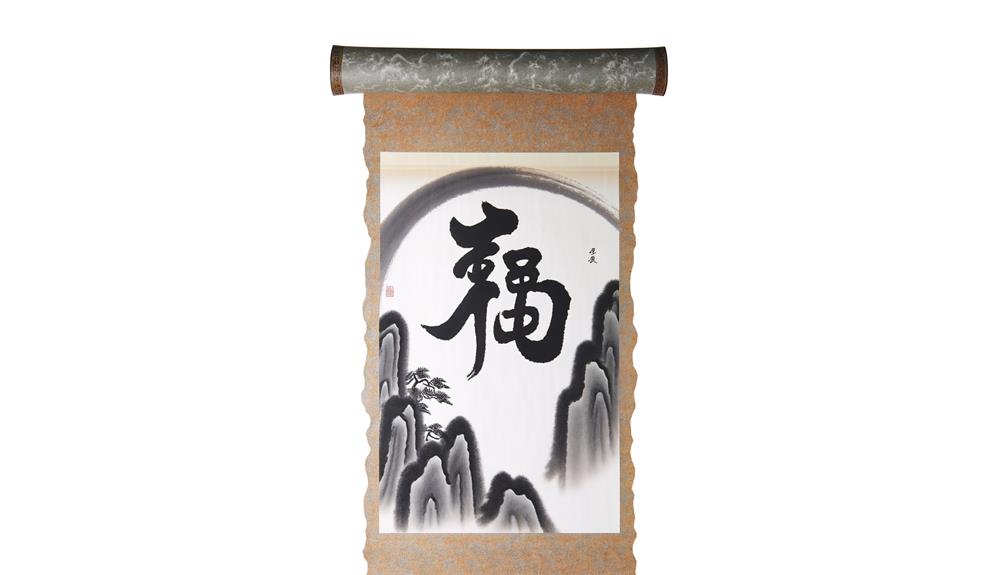
The philosophical foundations of the Chinese symbol for truth are deeply rooted in Confucian, Taoist, and Buddhist thought, each contributing a unique perspective to the concept of truth. Confucianism emphasizes moral rectitude and social harmony, wherein truth aligns with ethical behavior and societal order. Taoism, on the other hand, regards truth as an alignment with the Dao, or the natural way, advocating for simplicity and spontaneity. Buddhism offers a more introspective approach, viewing truth as enlightenment and liberation from ignorance.
| Philosophy | Key Concept | Truth Interpretation |
|---|---|---|
| Confucianism | Moral Rectitude | Ethical behavior and order |
| Taoism | Alignment with the Dao | Simplicity and spontaneity |
| Buddhism | Enlightenment | Liberation from ignorance |
This intricate tapestry of ideas enriches the Chinese understanding of truth.
真 in Classical Texts
Building on the philosophical foundations, the character 真 (zhēn), representing truth, frequently appears in classical Chinese texts, reflecting its multifaceted significance across various literary and philosophical works.
In Confucianism, 真 embodies moral integrity and authenticity, essential for personal development and societal harmony.
Daoist texts, such as the Dao De Jing, emphasize 真 as aligning with the natural order and ultimate reality, urging individuals to seek genuine insight beyond superficial appearances.
In Buddhist scriptures, 真 signifies the ultimate truth of enlightenment, transcending worldly illusions.
- Confucianism: Moral integrity and authenticity.
- Daoism: Alignment with the natural order and ultimate reality.
- Buddhism: Ultimate truth of enlightenment.
These interpretations showcase the deep cultural and philosophical roots of 真 in Chinese thought, echoing through time.
Modern Usage of 真
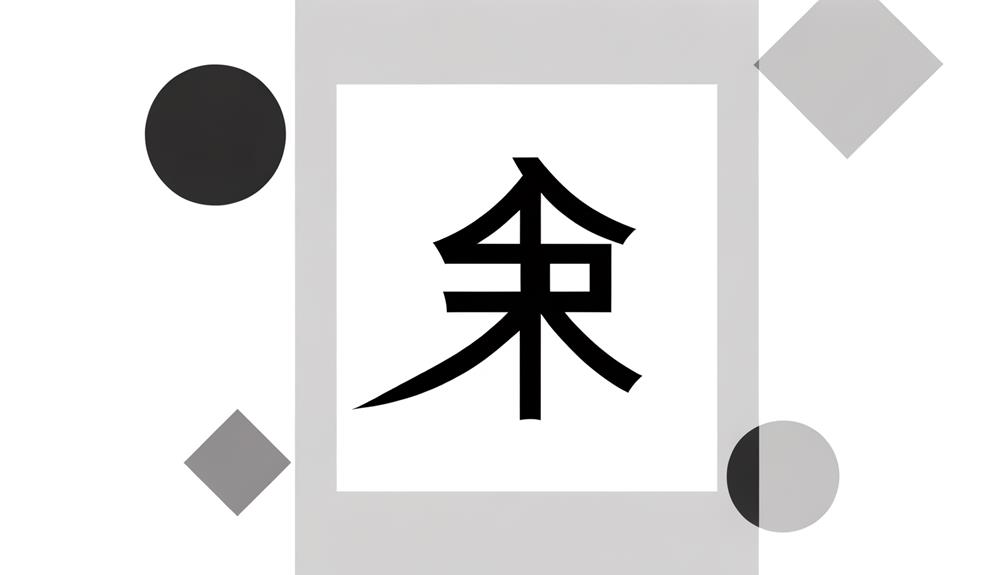
In contemporary Chinese society, the character 真 (zhēn) continues to hold significant weight, symbolizing sincerity, authenticity, and veracity in both personal and professional contexts.
In business, 真 is often invoked to emphasize genuine products and trustworthy practices. For instance, advertisements frequently use 真 to assure consumers of the authenticity and high quality of goods.
In interpersonal relationships, 真 implies a commitment to honesty and transparency, values deeply embedded in social interactions.
Additionally, in the domain of art and literature, 真 is used to connote an unfiltered, genuine expression of emotions and thoughts.
The widespread application of 真 underscores its enduring relevance, reflecting a cultural prioritization of truthfulness and integrity across various facets of modern life.
Cultural Significance
Rooted in millennia of philosophical discourse and spiritual practices, the cultural significance of 真 (zhēn) permeates various dimensions of Chinese life, embodying ideals of truth, purity, and moral integrity. This character's profound essence is interwoven with Confucian, Daoist, and Buddhist teachings, each imbuing it with layered meanings that extend beyond mere linguistic translation.
Confucianism:
真 represents the pursuit of moral righteousness and authenticity in human relationships.
Daoism:
It signifies harmony with the Dao, stressing a life in accordance with the fundamental truths of nature.
Buddhism:
真 embodies the quest for enlightenment, symbolizing the ultimate truth that transcends mundane existence.
Understanding 真 requires an appreciation of its deep-rooted cultural context and the philosophies that have shaped Chinese civilization.
Symbolism in Art
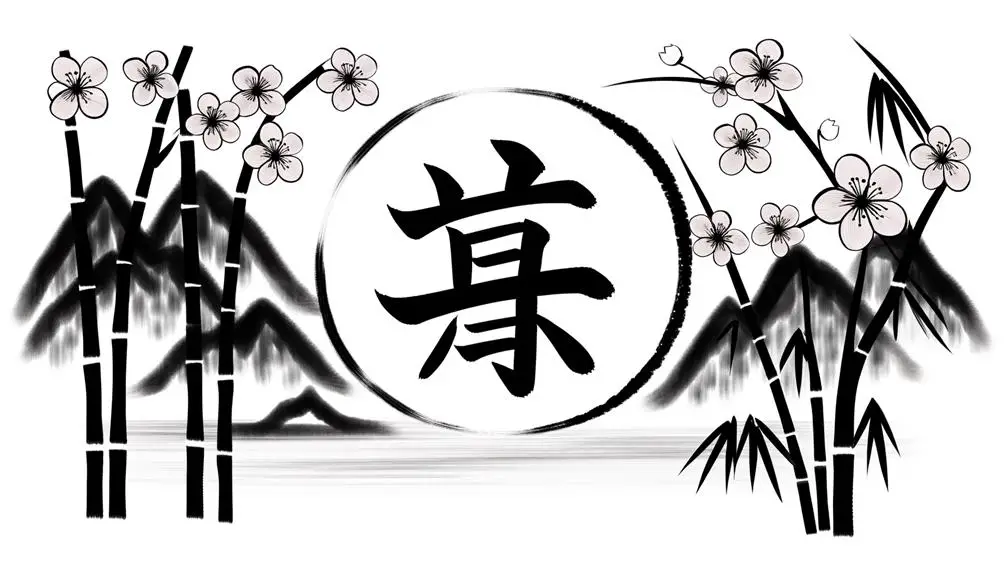
In the domain of Chinese art, the representation of truth is profoundly embodied in the practice of calligraphy. Each stroke is imbued with philosophical significance and introspective precision.
The character for truth, 真 (zhēn), serves not only as a linguistic symbol but also as a cultural artifact that encapsulates the moral and aesthetic values of Chinese civilization.
Through the fluidity and discipline of calligraphy, the essence of truth is artistically revealed, reflecting a harmonious blend of form and meaning.
Truth in Calligraphy
Embodying profound philosophical and cultural significance, the representation of truth in Chinese calligraphy transcends mere aesthetic appeal to convey deeper moral and ethical dimensions.
This ancient art form demands a harmonious balance between technique and spirit, reflecting the calligrapher's inner truth. The character for truth, 真 (zhēn), is meticulously crafted, each stroke an embodiment of sincerity and authenticity.
- Emotional Resonance: The fluidity and precision in the strokes evoke a sense of calm and introspection.
- Moral Integrity: The depiction of truth in calligraphy underscores the importance of honesty and integrity in Chinese culture.
- Cultural Reflection: Each brushstroke is a tribute to centuries of tradition, symbolizing a collective cultural consciousness.
Thus, Chinese calligraphy remains a powerful medium for expressing nuanced philosophical ideals.
Cultural Symbolism Unveiled
Exploring the intricate layers of cultural symbolism in Chinese art reveals a profound connection between visual representation and philosophical ideals.
Traditional Chinese artworks often encapsulate profound truths through symbolic elements. For instance, the recurring depiction of the dragon, a symbol of power, strength, and auspiciousness, is not merely decorative but conveys deeper societal values.
Similarly, the lotus flower, symbolizing purity and enlightenment, reflects Buddhist principles ingrained in Chinese culture. The character for truth (真, zhēn) itself is frequently embedded in art, suggesting an emphasis on authenticity and moral integrity.
真 in Literature
Frequently appearing in classical Chinese poetry and prose, the character 真 (zhēn) serves as a profound symbol of authenticity, sincerity, and ultimate reality. Renowned poets like Li Bai and Du Fu often employed 真 to convey deeper existential truths, reflecting the intrinsic alignment between human experience and cosmic order.
In the domain of Chinese literature, 真 transcends mere depiction, embodying a quest for:
- Inner harmony: Writers use 真 to explore the balance between one's inner world and external actions.
- Moral integrity: The character underscores virtues such as honesty and rectitude.
- Philosophical depth: It invites readers to ponder the nature of reality and illusion.
Thus, 真 remains a timeless emblem in literary works, perpetuating its significance across generations.
Truth in Chinese Proverbs

Chinese proverbs encapsulate profound wisdom and cultural values, often illustrating the concept of truth (真) in nuanced ways.
These age-old sayings not only reflect the collective ethos of Chinese society but also serve as moral compasses, guiding individuals toward authenticity and integrity.
Wisdom in Proverbs
Proverbs in Chinese culture often encapsulate profound wisdom, with many emphasizing the importance of truth and integrity. These proverbs serve not only as moral guidelines but also as reflections of deep-seated cultural values.
For instance, the saying "言必信,行必果" (yán bì xìn, xíng bì guǒ) translates to 'A promise must be kept, and actions must be resolute,' underscoring the significance of honesty and dependability. Such proverbs invoke a sense of ethical behavior and societal responsibility.
- "路遥知马力,日久见人心" (lù yáo zhī mǎ lì, rì jiǔ jiàn rén xīn): True character is revealed over time.
- "诚实是最好的政策" (chéng shí shì zuì hǎo de zhèng cè): Honesty is the best policy.
- "言而无信,不知其可" (yán ér wú xìn, bù zhī qí kě): Words without trust are futile.
Cultural Significance Explored
Understanding the cultural significance of truth in Chinese proverbs requires an in-depth exploration into the historical and philosophical underpinnings that have shaped these timeless expressions. Rooted in Confucianism, Taoism, and Buddhism, Chinese proverbs often reflect the pursuit of moral integrity, harmony, and wisdom.
For instance, the proverb '诚实为上策' (chéngshí wéi shàng cè) translates to 'Honesty is the best policy,' emphasizing the Confucian ideal of integrity. Similarly, '知之为知之,不知为不知' (zhī zhī wéi zhī zhī, bù zhī wéi bù zhī) from Confucius underscores the importance of acknowledging the truth of one's knowledge and ignorance.
These proverbs serve as ethical guides, illustrating truth as a foundational element of personal and societal virtue in Chinese culture.
Truth in Chinese Calligraphy
The art of Chinese calligraphy, with its rich history and profound cultural significance, provides a unique lens through which the concept of truth is both expressed and revered.
The character for truth, 真 (zhēn), is not merely a written symbol but a manifestation of philosophical and aesthetic values. Each stroke embodies the calligrapher's discipline, intention, and understanding of the essence of truth, creating an intimate connection between the artist and the viewer.
- Elegance: The fluidity of the strokes evokes a sense of harmony and balance.
- Integrity: The precision reflects the unwavering pursuit of honesty.
- Depth: The layered meanings invite contemplation and introspection.
Thus, calligraphy transforms truth into an experiential journey, where form and meaning converge to inspire profound reflection.
真 in Popular Culture

In contemporary popular culture, the character 真 (zhēn) frequently appears in media, fashion, and art, symbolizing authenticity and sincerity. Within media, it is often used in titles and dialogues to underscore themes of truth and genuine emotions.
Fashion brands incorporate 真 into designs, resonating with consumers who seek genuine products and experiences. Art installations and graffiti leverage 真 to convey messages of integrity and realness, often juxtaposed against a backdrop of societal falsities.
This character's presence in popular culture reflects a collective yearning for truth amid an era of misinformation and superficiality. Its utilization not only enriches artistic expressions but also reinforces cultural values that prioritize honesty and authenticity.
Learning to Write 真
Building on 真's prominent role in contemporary culture, mastering the art of writing this character involves understanding its intricate strokes and historical evolution within the Chinese script. The character 真, meaning 'truth,' is composed of ten strokes, each requiring precision and fluid motion. Its structure reflects the harmony and balance inherent in traditional Chinese calligraphy.
To grasp the essence of 真, one must appreciate:
- The cultural significance of its historical roots, tracing back to ancient seal scripts.
- The aesthetic beauty in the balanced composition of horizontal and vertical strokes.
- The meditative practice involved in mastering each stroke, symbolizing a journey to inner truth.
Understanding these elements offers a deeper connection to the cultural and philosophical dimensions of 真.
Conclusion
The symbol 真 (zhēn), embodying the concept of truth in Chinese, weaves a tapestry of historical depth, philosophical resonance, and cultural significance.
From its etymological roots to its presence in classical texts and modern usage, 真 is more than a mere character; it is a linguistic colossus that bridges millennia of thought.
Its portrayal in calligraphy and proverbs underscores its enduring importance, while its appearances in popular culture continue to affirm its timeless relevance.

